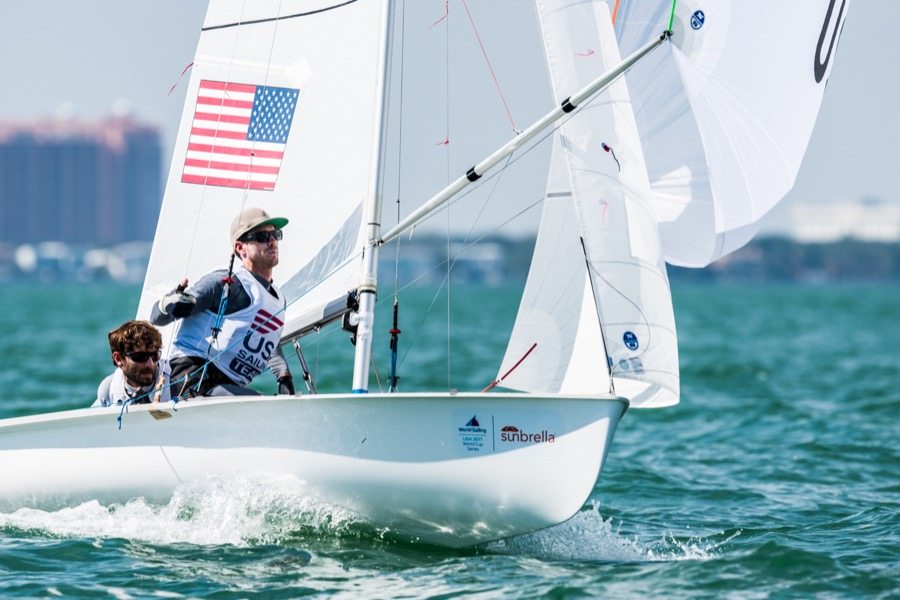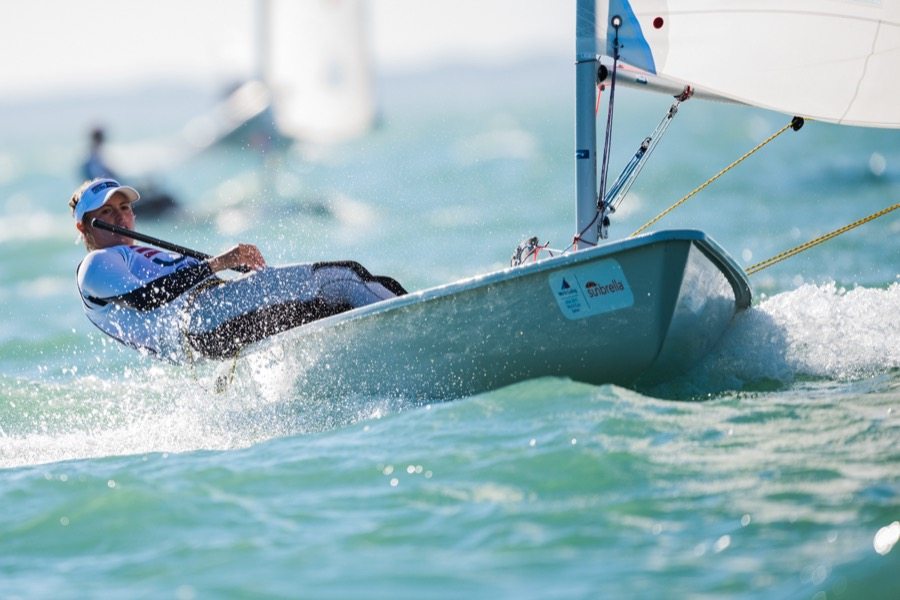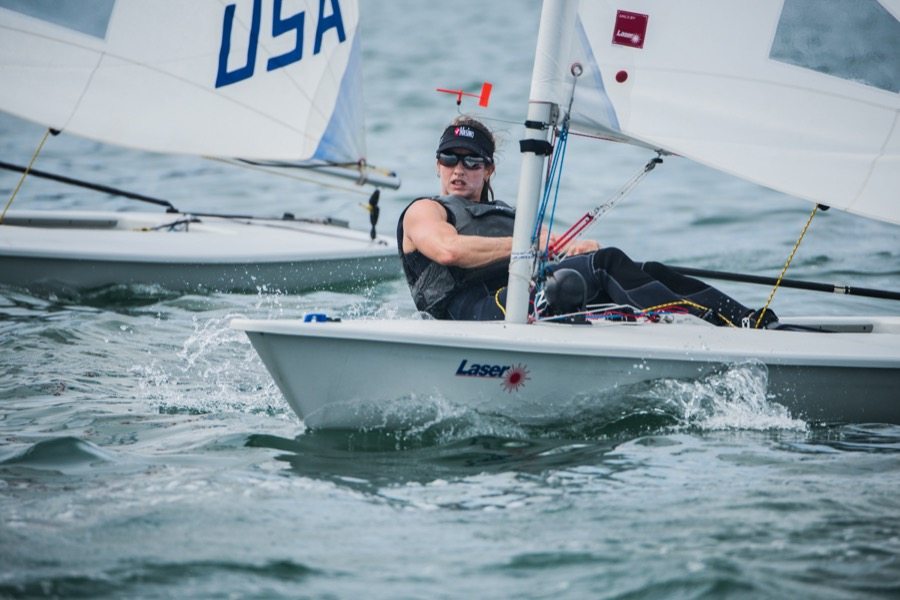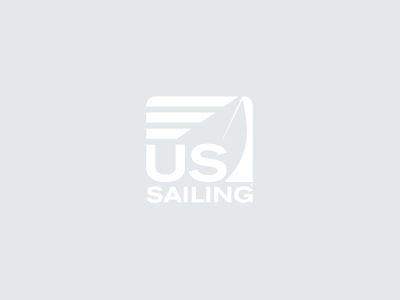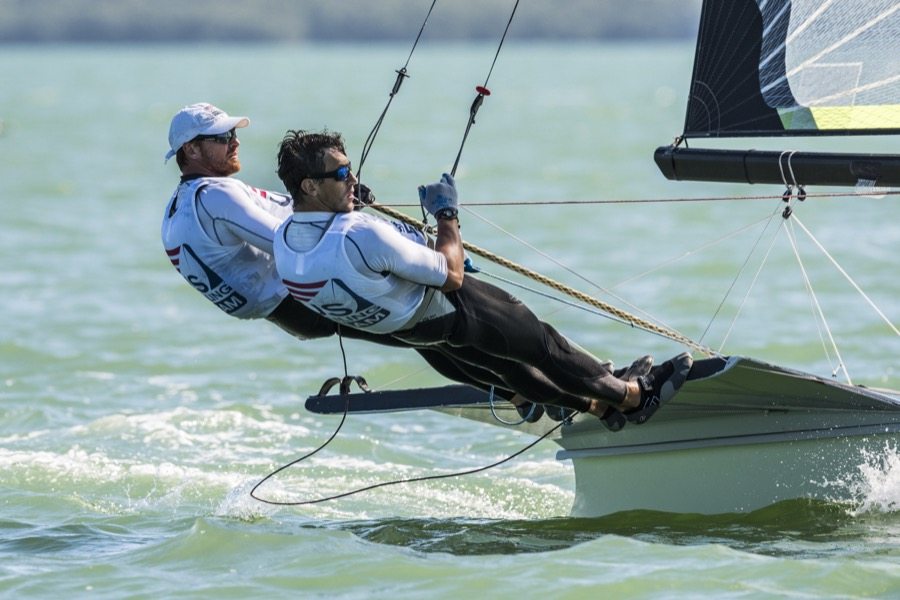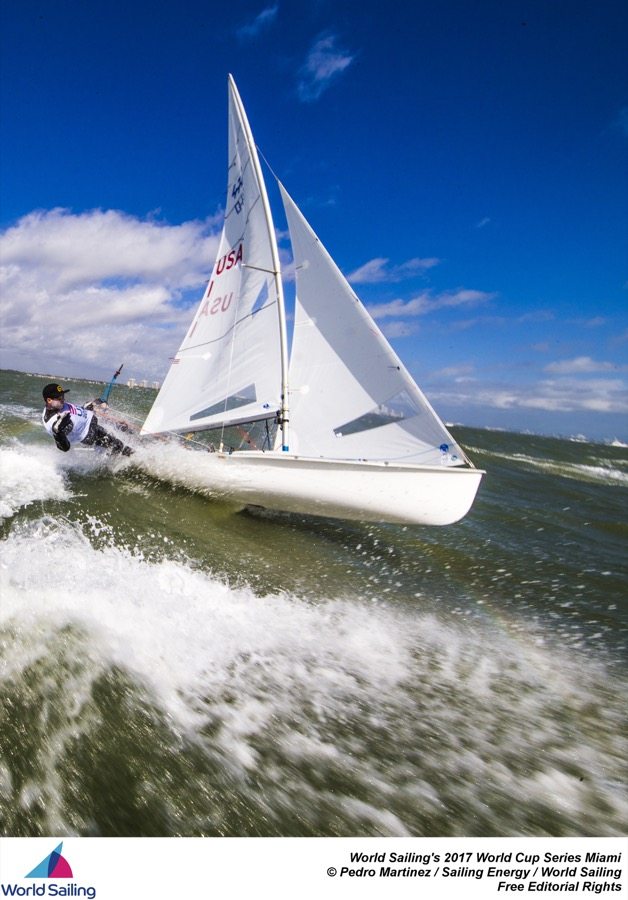Both Experienced and Untested U.S. Boats Excel In Unpredictable Miami
FOR IMMEDIATE RELEASE January 26, 2017 Miami, Fla. - World Cup Series Miami 2017, Presented by Sunbrella (January 22-29, 2017) saw shifty conditions return to Biscayne Bay, but the world-renowned sailing venue nevertheless yielded up a full day of exciting racing. Americans are battling inside the top ten overall in seven of ten Olympic classes, with one more day of full-fleet action on…Read MoreUSA Jumps Upward in Radial, Laser and Men’s 470 in Miami
Pictured: Erika Reineke (Ft. Lauderdale, Fla.), Women's Laser Radial. Photo: Jen Edney/US Sailing Team FOR IMMEDIATE RELEASE January 25, 2017 Miami, Fla. - With the second of six days of racing completed at World Cup Series Miami 2017, Presented by Sunbrella (January 22-29, 2017) American sailors are in the top ten in seven of ten classes at North America's premier…Read MoreAnna Tunnicliffe Withdraws from Sailing World Cup Miami 2017
Pictured: Anna Tunnicliffe (Pittsburgh, Penn.), Laser Radial. Photo: Jen Edney/US Sailing Team. FOR IMMEDIATE RELEASE January 24, 2017 Miami, Fla. - Olympic Champion Anna Tunnicliffe (Pittsburgh, Penn.) has withdrawn from competing in the Laser Radial class at Sailing World Cup Miami 2017, due to the World Anti-Doping Agency (WADA)'s denial of her expedited request to return…Read MoreUS Sailing Announces Selection Process for 2017 Youth Match Racing World Championship
PORTSMOUTH, R.I. (January 24, 2017) – The 2017 Youth Match Racing World Championship will be hosted by the Balboa Yacht Club in Corona del Mar, Calif. on July 30 – August 5, 2017. Teams will be racing in the new Governor’s Cup 22s. To compete, sailors must be under the age of 23 in 2017.…Read MoreUS Sailors Begin Racing On Home Waters In Miami
Pictured: Fred Strammer (Nokomis, Fla.) and Trevor Burd (Marblehead, Mass.), Men's 49er. Photo: Jen Edney/US Sailing Team. FOR IMMEDIATE RELEASE January 24, 2017 Miami, Fla. - Sailing can often be as much of a battle against the weather as it is a contest between athletes, and the 450 top sailors assembled on Miami's Biscayne Bay for World Cup…Read MoreTo Get to Tokyo, Start In Miami: US Sailing Team Begins 2020 Mission
Pictured: U.S. Olympic sailors Stu McNay (Providence, R.I.) and Dave Hughes (Miami, Fla.) train in advance of the first day of racing in Miami. @Pedro Martinez / Sailing Energy / World Sailing FOR IMMEDIATE RELEASE January 23, 2017 Miami, Fla. - US Sailing Team athletes have joined over 400 competitors from 43 other nations for the…Read MoreComprehensive Recreational Powerboat Education “How-to” Manual Now Available
WASHINGTON, D.C. (January 20, 2017) - The U.S. Coast Guard’s National On-Water Standards (NOWS) Program grant management team and the American Boat & Yacht Council (ABYC) are pleased to announce the release of a new comprehensive “How-to…” guide for designing On-Water instruction using the American National Standard (ANS) for On-Water recreational powerboat operation. The Power Standard Technical…Read MorePaine, Moroz Named US Sailing’s 2016 Rolex Yachtsman and Yachtswoman of the Year
PORTSMOUTH, R.I. (January 12, 2017) – Olympic Bronze Medalist Caleb Paine (San Diego, Calif.) and IKA Formula Kite World Champion Daniela Moroz (Lafayette, Calif.) today were selected as US Sailing’s 2016 Rolex Yachtsman and Yachtswoman of the Year.
Read More

